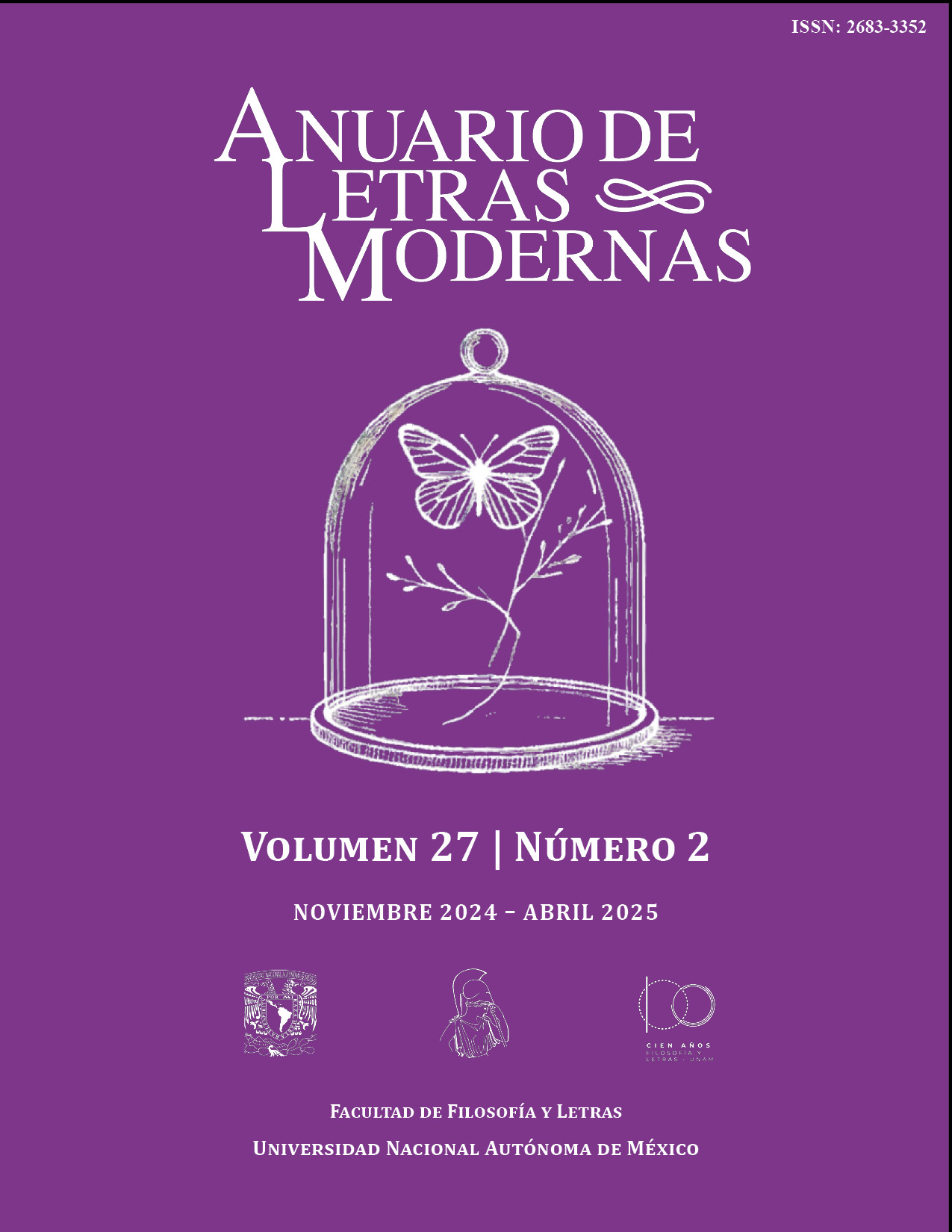“Cruel Pleasures”: A Gothic Reading of the Body and the Space in La Philosophie dans le boudoir by Marquis de Sade
Main Article Content
Abstract
In La Philosophie dans le boudoir, Sade draws a portrait of the violence and horror of the postrevolutionary French society. In it, the boudoir becomes a representation of the world, a microcosm where the contradictions of the human condition are explored, and the hypocrisy of the illustrated values is revealed. Although Sade’s work does not belong to the gothic tradition or to horror literature, his portrayal of themes, like the relationship between body and space, shares several similarities with classical gothic literature in English. The aim of this article is, therefore, to analyze the relationship between the body of the characters of the novel and the boudoir, understood as a reconfiguration of the traditional gothic space, to show that La Philosophie dans le boudoir can be read from the optic of the gothic. This paper will show how Sade’s novel, whose characteristics are related to the construction of space and the representation of bodily excess, reflects the transgression of the dominant classes. Thanks to these elements, the novel is able to provide a glimpse into the horror that hides behind the moral institutions of the French society of its time, as it defies concepts such as education, civility, and family.
Article Details

This work is licensed under a Creative Commons Attribution-NonCommercial-NoDerivatives 4.0 International License.
References
ALLISON, David; ROBERTS, Mark; Weiss, Allen. (1995). “Introduction”. En David Allison, Mark Roberts y Allen Weiss (Eds.), Sade and the Narrative of Transgression (pp. 1-15). Cambridge University Press.
BACHELARD, Gaston. (1994). The poetics of space (Maria Jolas, Trad.). Beacon Press. (Obra original publicada en 1957).
BAKHTIN, Mikhail. (1984). Rabelais and his World (Hélène Iswolsky, Trad.). Indiana University Press. (Obra original publicada en 1965).
BECKFORD, William. (1983 [1782]). Vathek. (Roger Lonsdale, Ed.). Oxford University Press
BOTTING, Fred. (1996). Gothic. Routledge.
FERNIE, Ewan. (2012). The Demonic Literature and Experience. Routledge.
HENAFF, Marcel. (1999). Sade: The Invention of the Libertine Body. (Xavier Callahan, Trad.). University of Minnesota Press. (Obra original publicada en 1978).
IHRMAN, David. (1988). Excess, Transgression and the Inexpiable: Drive and the Deformation of Writing in Sade and Bataille. State University of New York.
KRISTEVA, Julia. (1982). The Powers of Horror: An Essay on Abjection. Columbia University Press.
LEWIS, Matthew. (1998 [1796]). The Monk. (Christopher Maclachlan, Ed.). Penguin Books.
LINGIS, Alphonso. (1995). “The Society of the Friends of Crime”. En David Allison, Mark Roberts y Allen Weiss (Eds.), Sade and the Narrative of Transgression (pp. 100-121). Cambridge University Press.
LILLEY, Ed. (1994). “The name of the Boudoir”. Journal of té society of architectural historians, 53(2), 193-198. https://doi.org/10.2307/990892
PHILLIPS, John. (2005). The Marquis de Sade: a Very Short Introduction. Oxford University Press.
PUNTER, David. (2004). The Gothic. Blackwell Publishing.
RUSSELL, Melissa. (2013). “Transgression, Excess, and the Sacred: Btaille’s Erotic in Sade”. En Jessica R. Pfeffer (Ed.), Desire, Performance and Classification: Critical Perspectives on the Erotic (pp. 37-46). Brill. https://doi.org/10.1163/9781848881204_006
SADE, Marqués de. (1966). “Reflections on the Novel”. En Austryn Wainhouse y Richard Seaver (Trads.), The 120 Days of Sodom and Other Writings (pp. 91-115). Grove Press. (Obra original publicada en 1904).
SADE, Marqués de. (2019). La filosofía en el tocador (Maritza Izquierdo, Trad.). Editorial Verbum. (Obra original publicada en 1795).
SMITH, Philip. (2003). “Narrating the Guillotine: Punishment Technology as Myth and Symbol”. Theory, Culture and Society, 20(5), 27-51. https://doi.org/10.1177/02632764030205002
SPOONER, Catherine. (2007). “Gothic in the Twentieth Century”. En Catherine Spooner y Emma McEvoy (Eds.), The Routledge Companion to Gothic (pp. 38-48). Routledge.
VARA, María. (2008). “Gothic Permutations from the 1790s to the 1970s: Rethinking the Marquis de Sade’s Legacy”. En Avril Horner (Ed.), Le Gothic: Influences and Appropriations in Europe and America (pp. 100-115). Palgrave.

